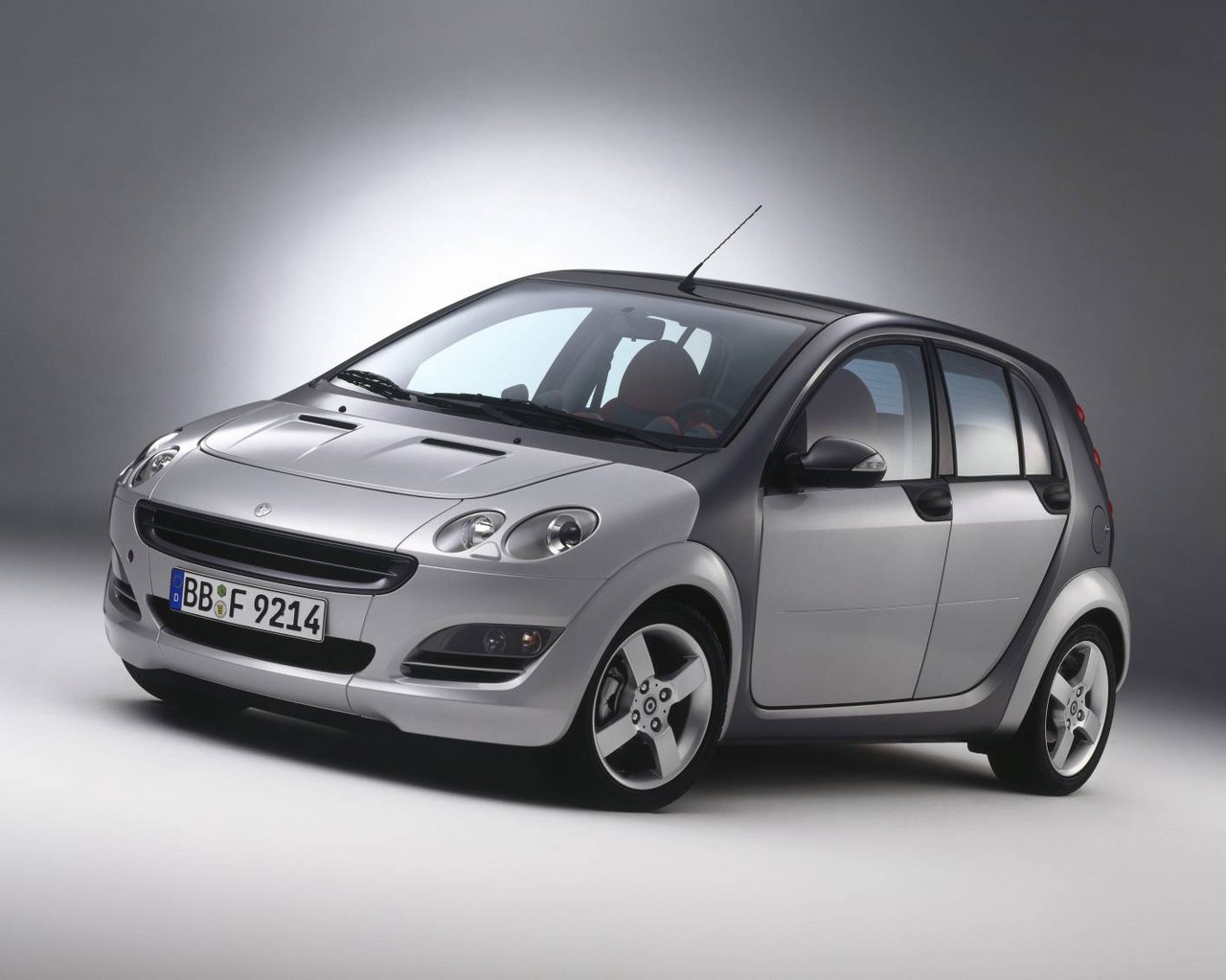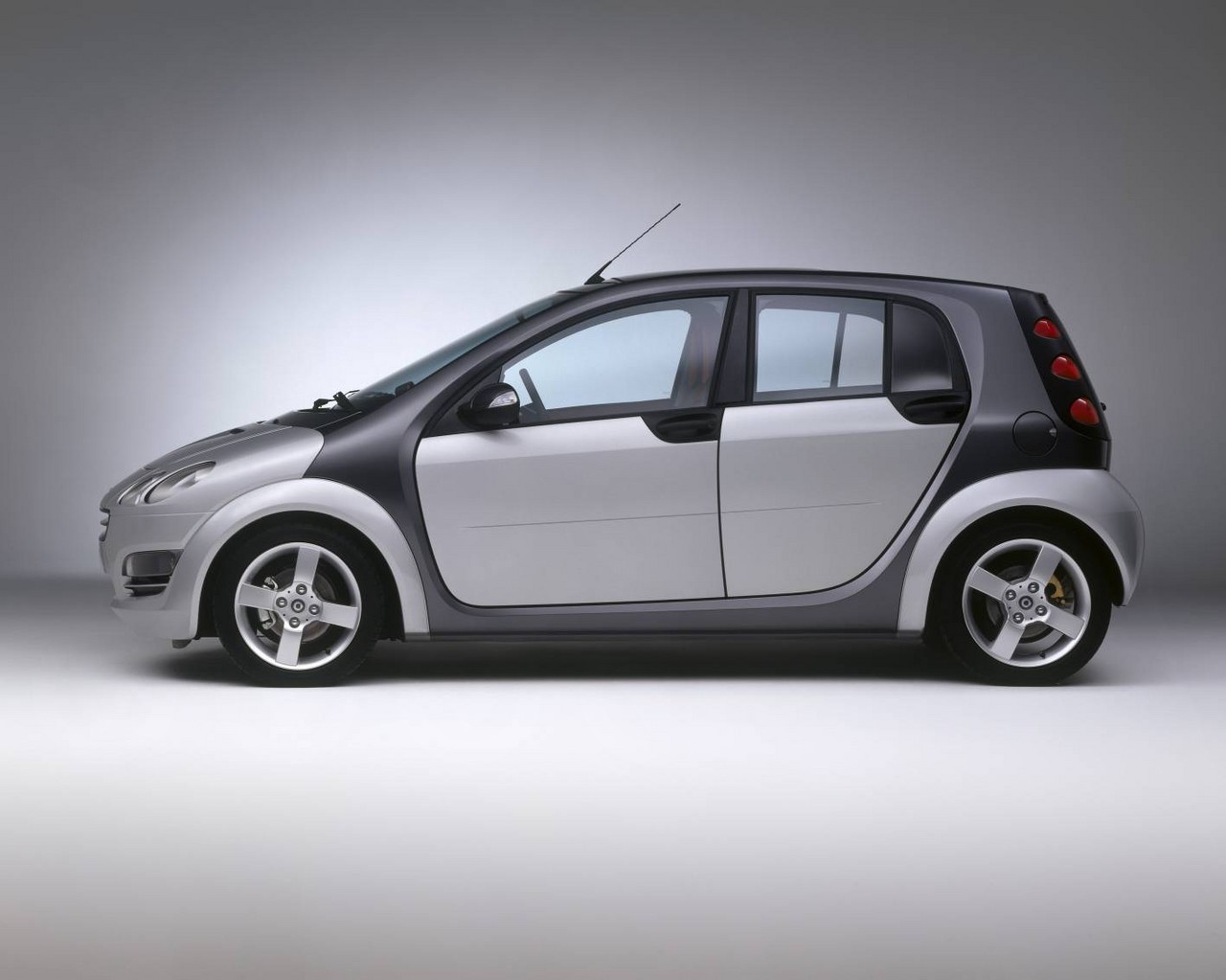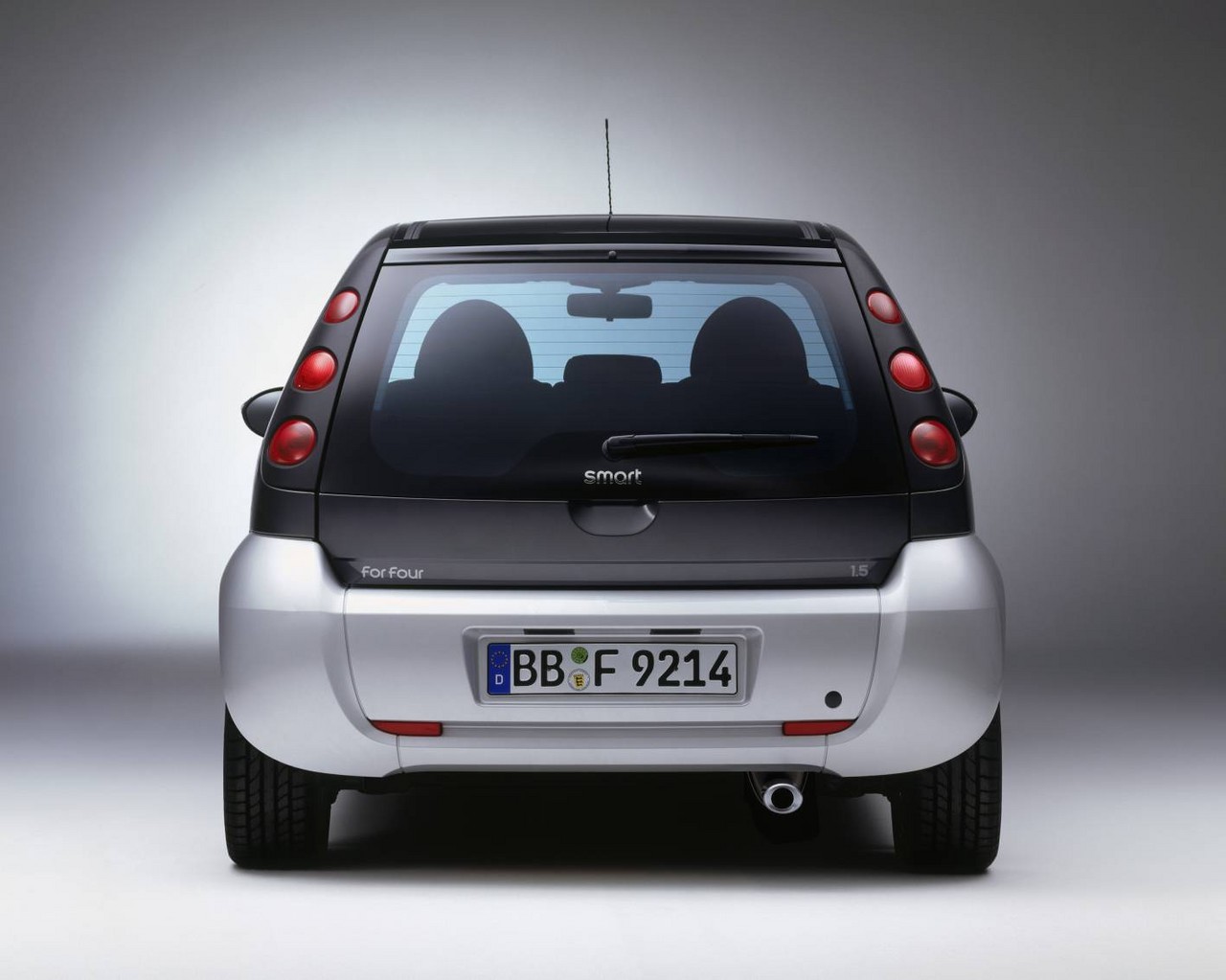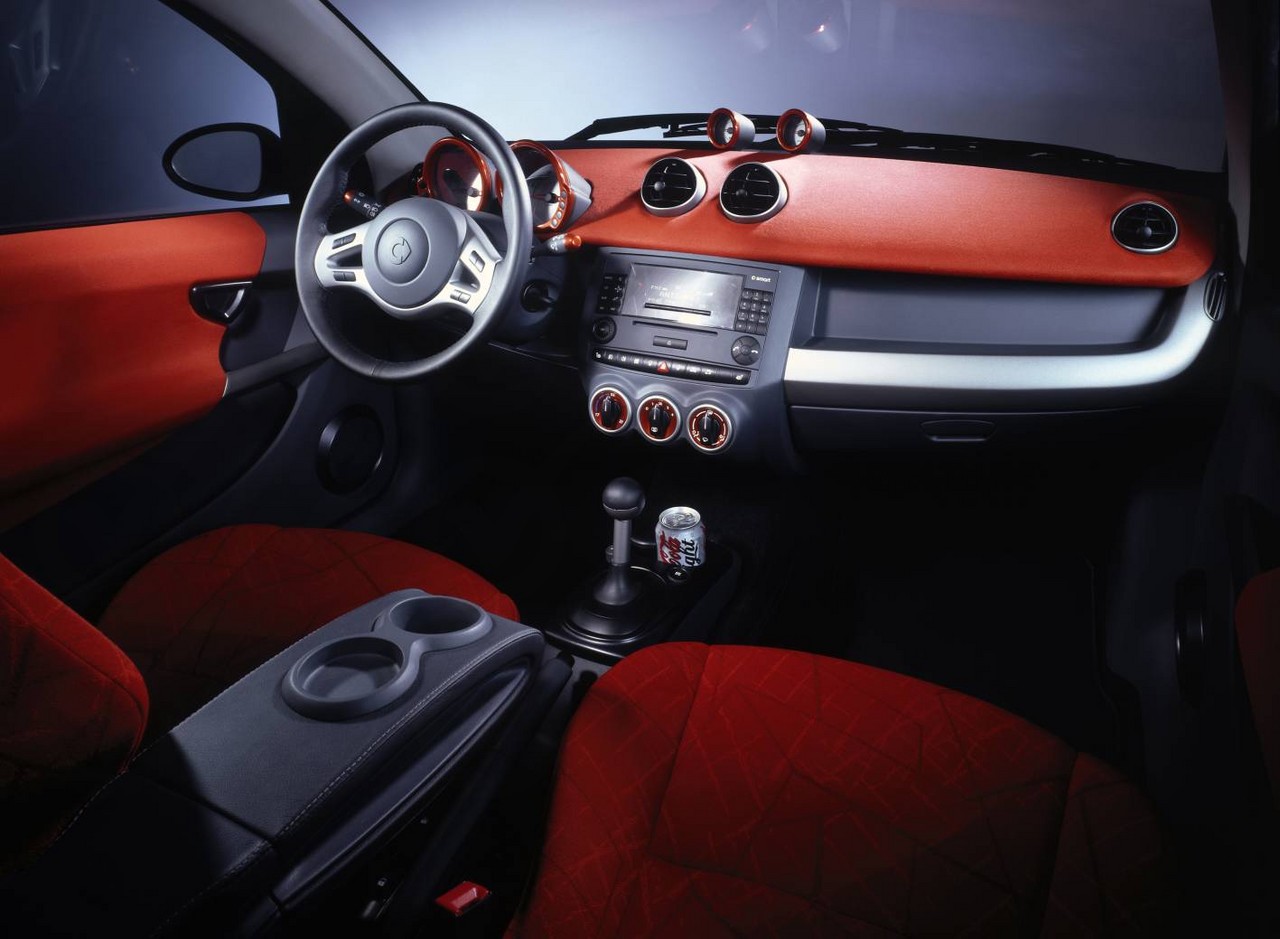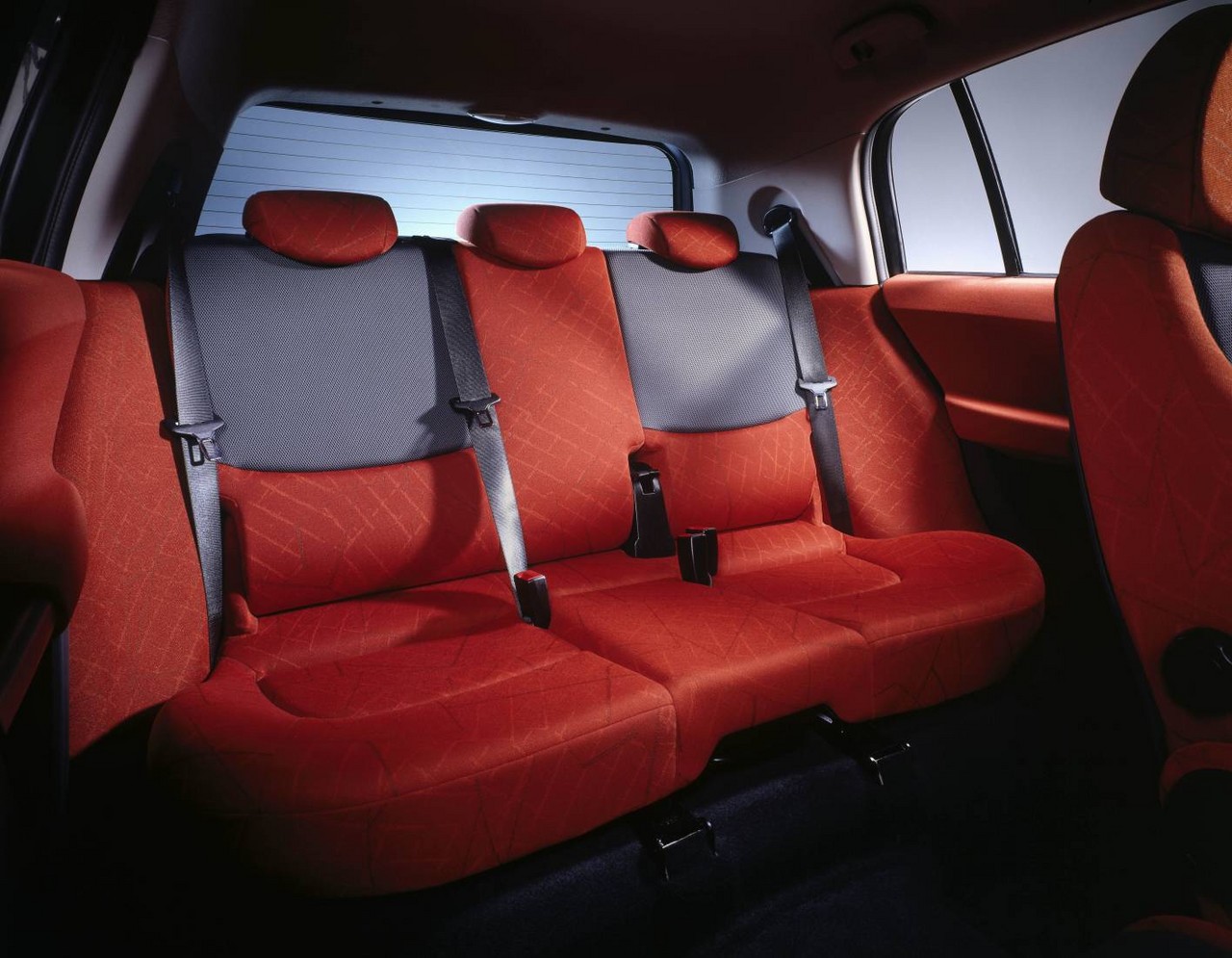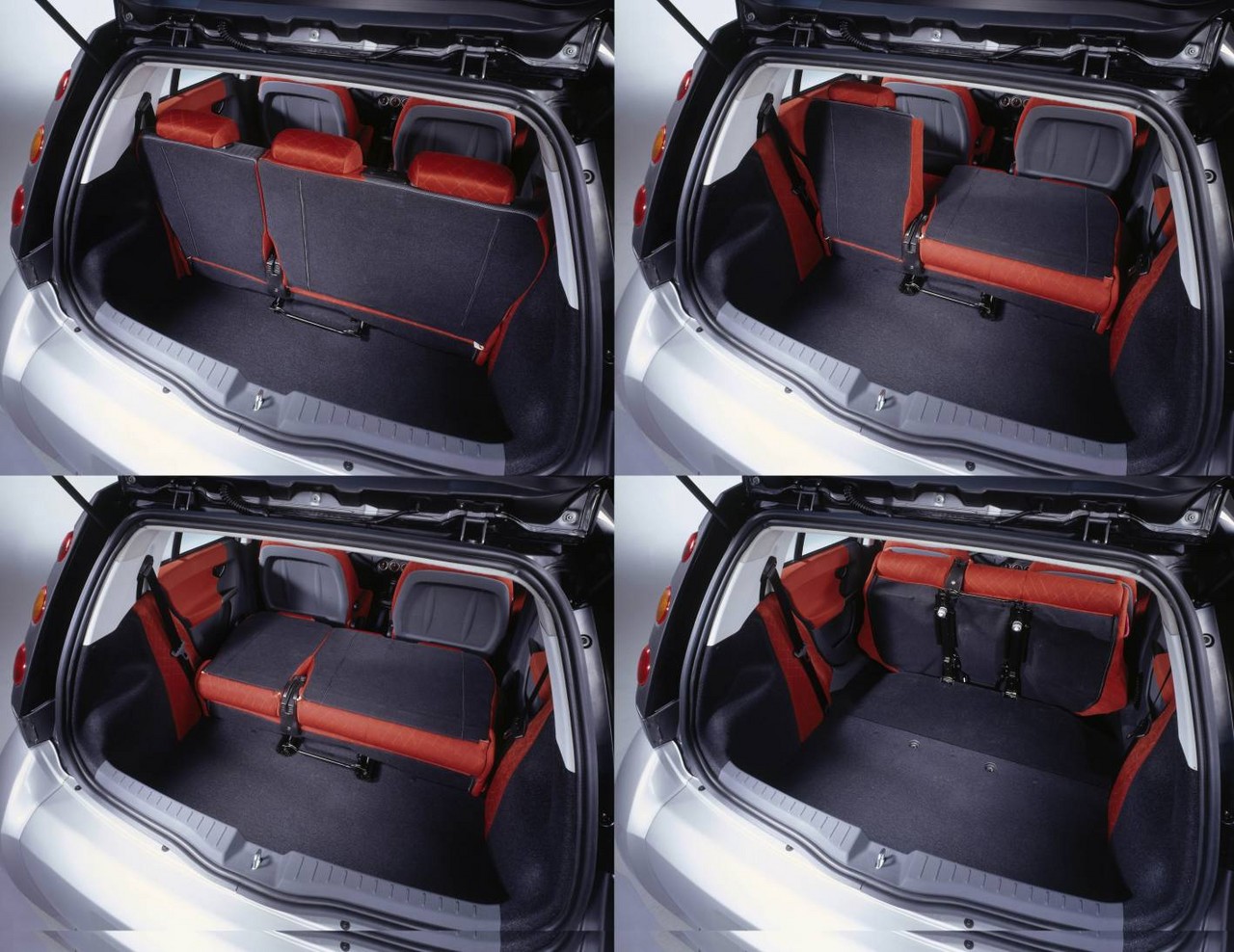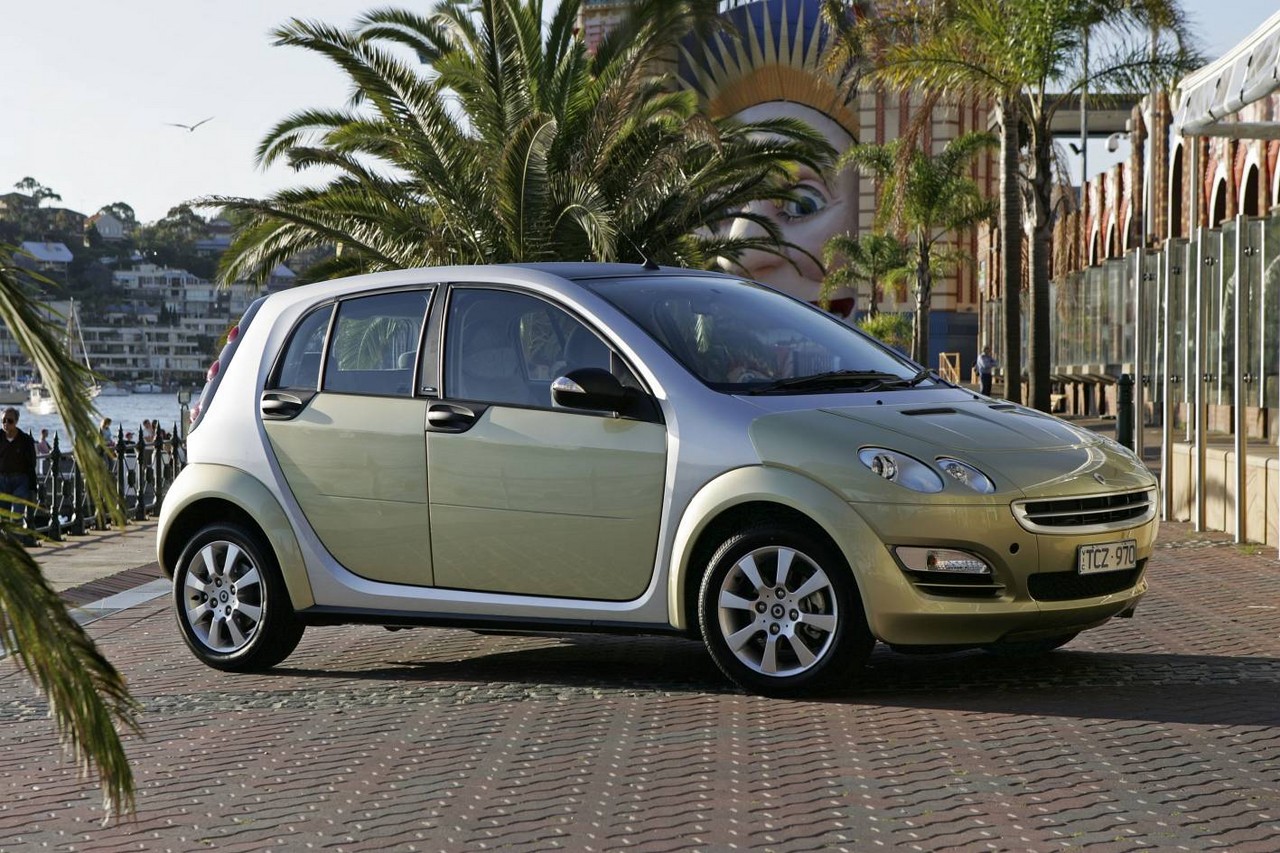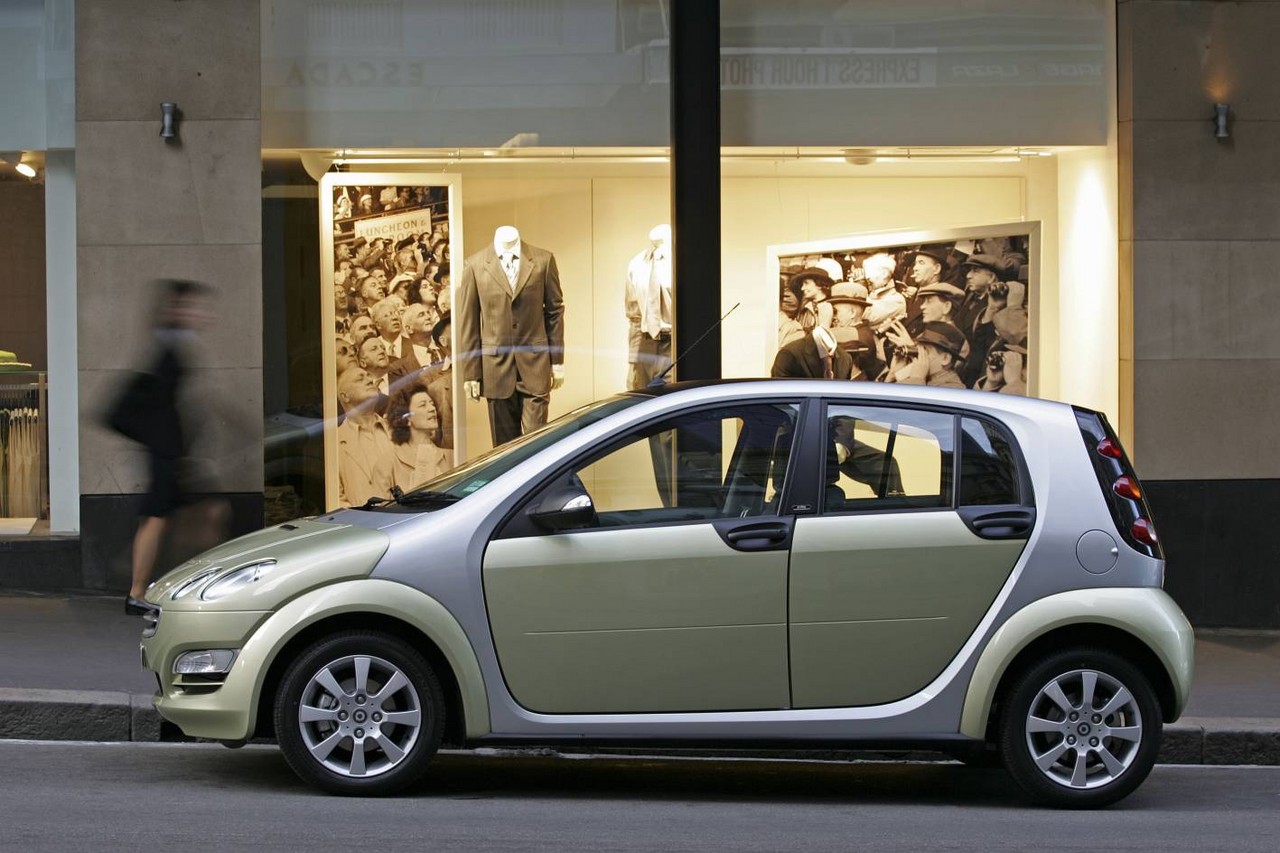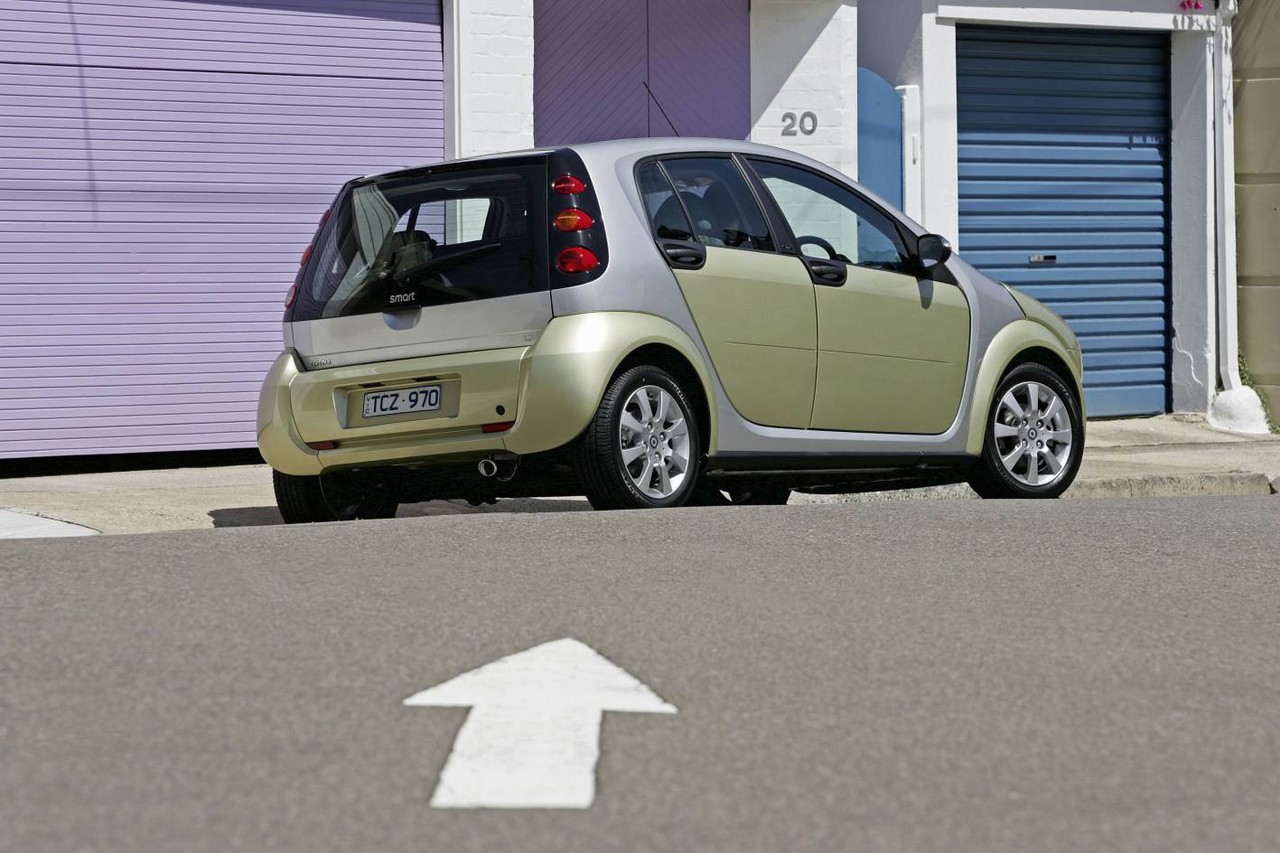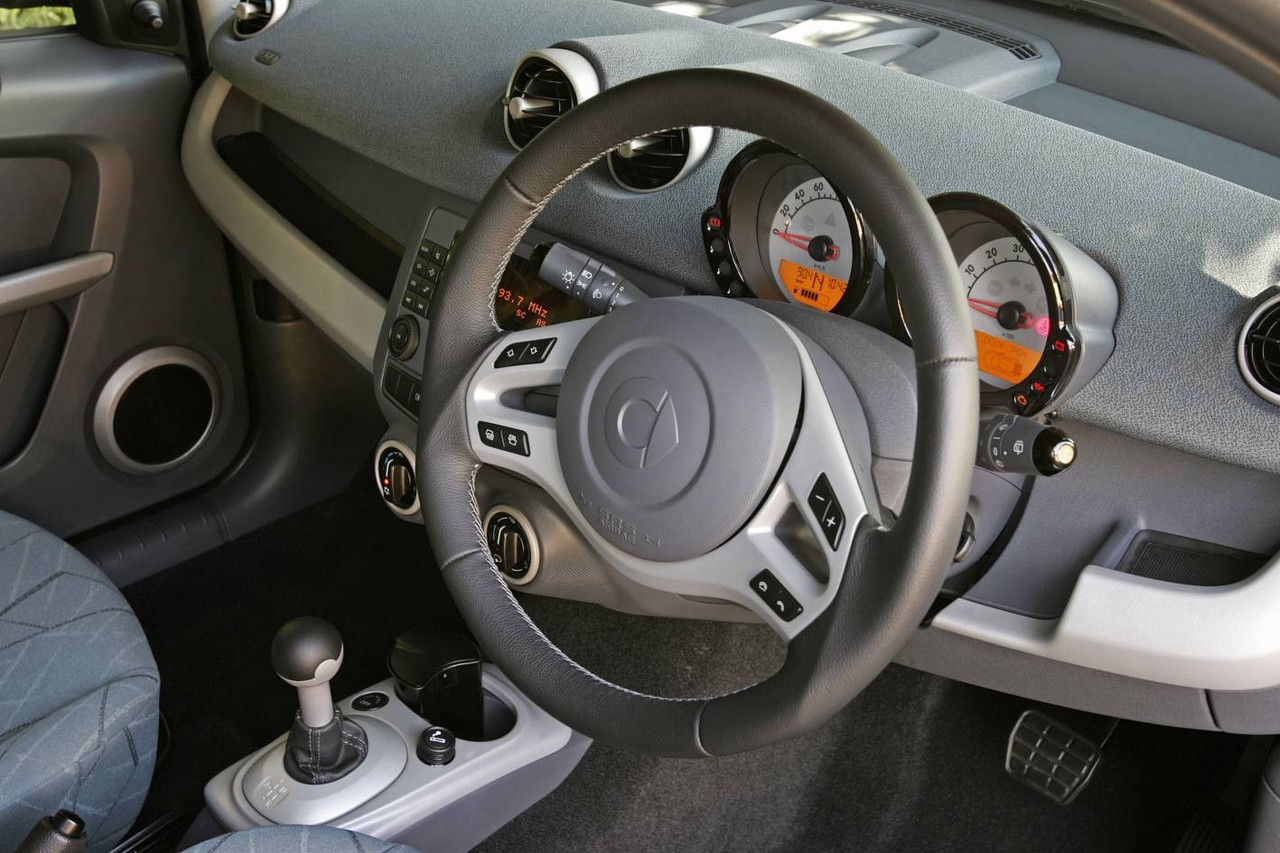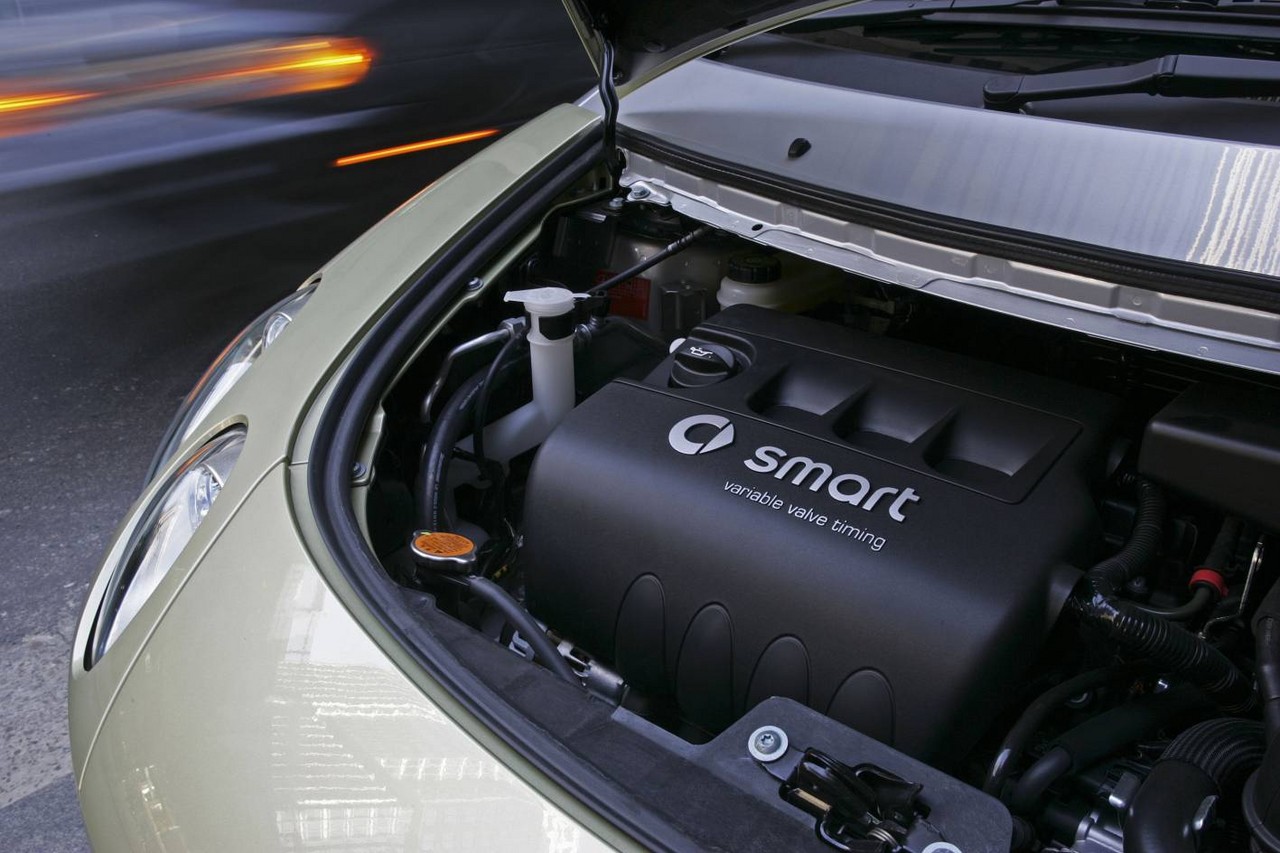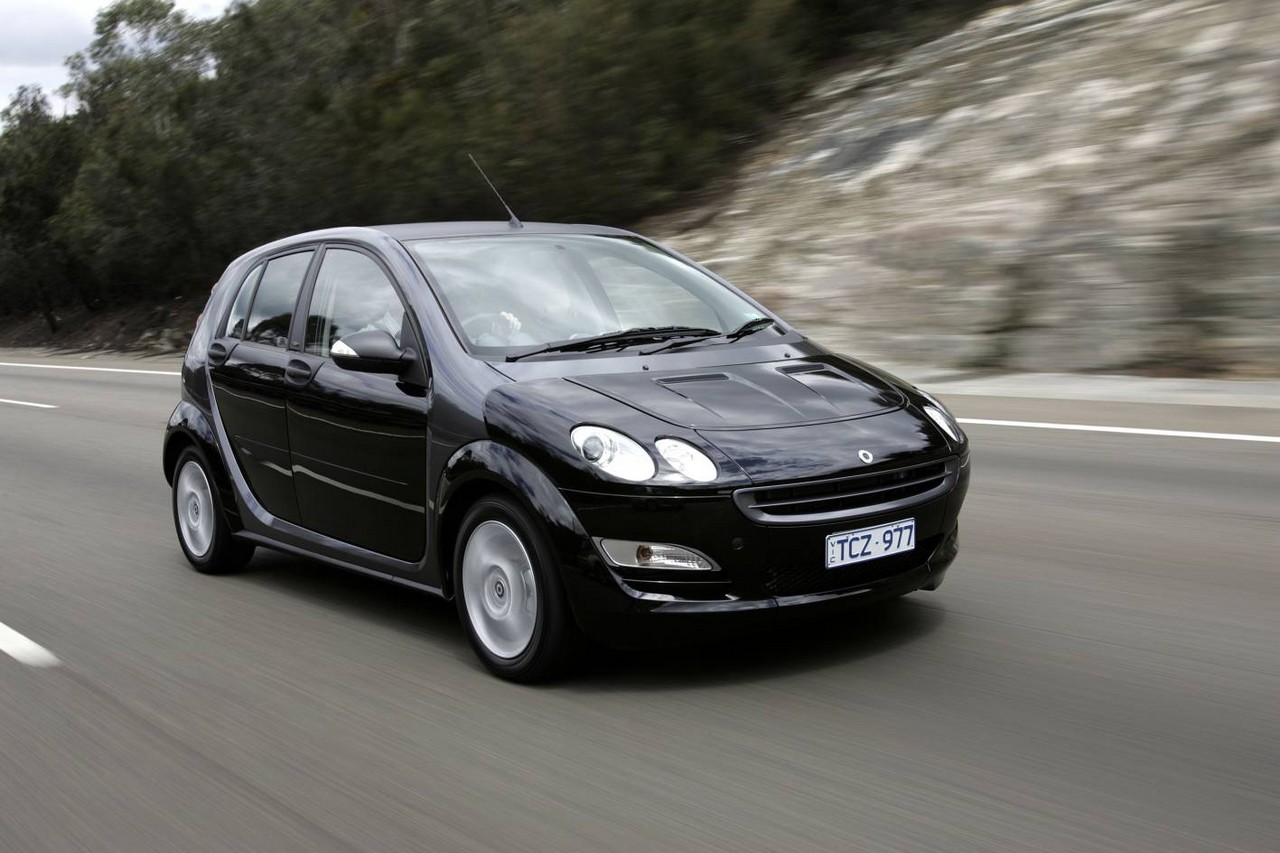
- Willing and economical 1.3- and 1.5-litre petrol engines
- Supportive front seats
- Spacious interior
- Lightweight, agile body
- Short-travel suspension lacks compliance
- Vague steering lacks feel
- Six-speed semi-automatic transmission provides slow gearshifts
- Cabin lacks sound insulation
- Higher servicing and repair costs than rivals
Overview
Released in October 2004, the Smart W454 ForFour was a five-door, four-seat hatchback. Manufactured in Born, Netherlands, the front-wheel drive ForFour was available with 1.3- and 1.5-litre four-cylinder petrol engines that were mated to either five-speed manual or six-speed semi-automatic transmissions (‘softouch plus’). In 2006, the range was expanded with a turbocharged Brabus variant.
4A90, 4A91 and 4G15 engines
For the standard ForFour, the 1.3-litre (4A90) and 1.5-litre (4A91) four-cylinder petrol engine had die-cast aluminium blocks and heads, double overhead camshafts, four valves per cylinder, variable intake valve timing and a compression ratio of 10.5:1.
The Brabus variant, however, was powered by a turbocharged 1.5-litre (4G15) engine which had a cast iron block and a compression ratio of 9.0:1. Whereas the standard ForFour engines were designed for premium unleaded petrol (95 RON), the Brabus engine was designed for 98 RON unleaded petrol but could be operated on 95 RON.
Dimensions and suspension
Sharing its underpinnings with the Mitsubishi RG Colt , the W454 ForFour was 3752 mm long, 1684 mm wide, 1450 mm tall and had a 2500 mm long wheelbase. Furthermore, the ForFour had electric power steering, MacPherson strut front suspension and a torsion beam rear axle.
| Engine | Trans. | Peak power | Peak torque | |
|---|---|---|---|---|
| ForFour | 1.3-litre petrol I4 | 5sp man., 6sp semi-auto |
70 kW at 6000 rpm | 125 Nm at 4000 rpm |
| 1.5-litre petrol I4 | 5sp man., 6sp semi-auto |
80 kW at 6000 rpm | 145 Nm at 4000 rpm | |
| ForFour Brabus | 1.5-litre turbo petrol I4 | 5sp man. | 130 kW at 6000 rpm | 230 Nm at 3500 rpm |
Safety equipment
Standard safety equipment for the Smart ForFour included dual front airbags, front side airbags, ABS, electronic brake force distribution, brake assist, electronic stability control with corner braking control, traction control and front seatbelts with pretensioners and load limiters.
Euro NCAP crash testing
In Euro NCAP crash testing , a 2005 ForFour received a four star adult occupant protection rating with a score of 25.83. In the frontal offset impact test, protection from serious leg injury was marginal for the driver and there was a slight risk of serious chest injury. Furthermore, there was a moderate risk of serious chest injury for the driver in the side impact test.
Features
Standard features for the Smart ForFour included 15-inch alloy wheels with 195/50 R15 tyres, a two speaker sound system with CD player, a leather-wrapped steering wheel and gearshift, 60/40 split and folding rear seats (with fore and aft slide adjustment), remote central locking, power front windows, tinted glass roof, an alarm and immobiliser. For models fitted with the semi-automatic transmission, steering wheel gearshift paddles were available as an option.
The 1.5-litre models were further equipped with a four speaker sound system, a multi-function steering wheel and trip computer.
Smart ForFour Brabus
Released in April 2006, the Brabus variant was distinguished by its 17-inch alloy wheels with 205/40 R17 front and 225/35 R17 rear Michelin Pilot Sport tyres, leather seats, heated front seats, front fog lamps, heated mirrors, power rear windows, sunroof, height adjustable driver’s seat and cargo cover. Visually, the Brabus variants could be identified by their larger front spoiler, two diamond mesh grille inserts, side skirts, rear diffuser, chrome-plated double-pipe exhaust and roof spoiler.
The 4G15 engine delivered 90 per cent of its maximum tractive power in the range of 2300-5700 rpm. As such, the ForFour Brabus could accelerate from rest to 100 km/h in 6.9 seconds. Furthermore, the suspension was modified with reinforced wishbones, shorter springs (30 mm shorter at the front and 28 mm shorter at the rear), larger supporting joints and new wheel hubs with stronger brake caliper brackets.
Related links
